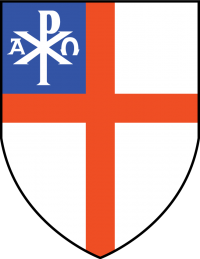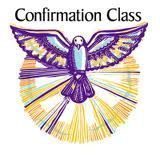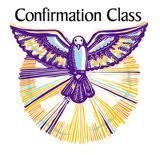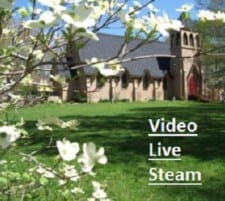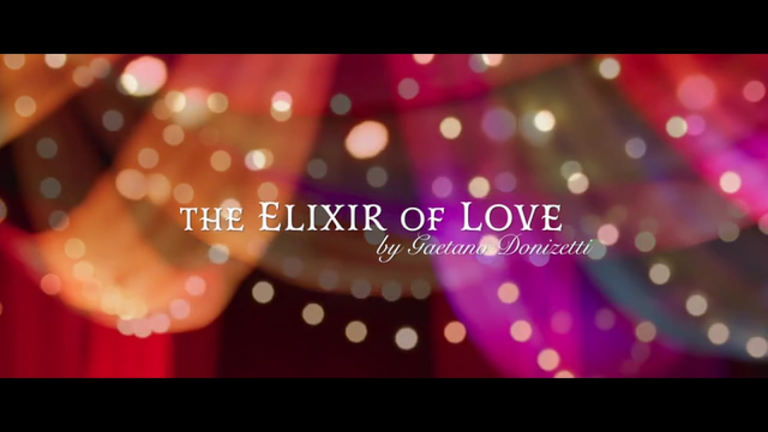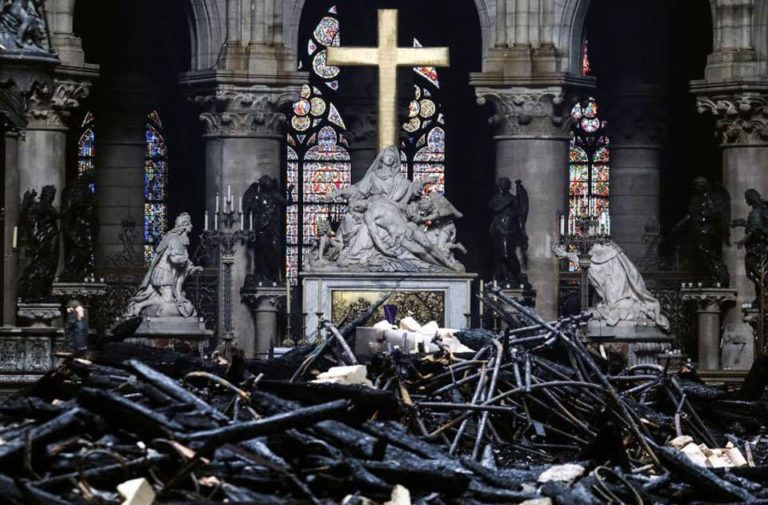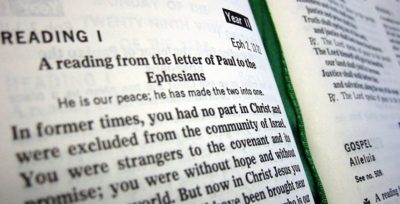Confirmation Class 3 – April 24tn, May 2nd, and May 16)
St. Michael The Archangel 2211 Margaret Wallace Rd Matthews, N.C. 28105
Rev. Michael Cawthon, St. Michael the Archangel, Rector (2021)
Confirmation class 3 (April 24 & May 2)
BOOK OF COMMON PRAYER (1928)
THE SACRAMENTAL LIFE:
PART I BAPTISM AND HOLY EUCHARIST
The Sacraments are outward and visible signs of inward and spiritual grace, ordained by Christ himself, as means whereby we receive the same, and pledges to assure us thereof. The principle of the Sacraments is found in the whole Bible, and its fulness in the New Testament, that is, in the Incarnation of the Word of God, Jesus Christ. God becomes man so that man may become one with God. God assumes human nature in the Incarnation, all that pertains to man, human body, mind, soul, and spirit, so that human nature may be redeemed, sanctified and glorified by God to share in the divine life. The Sacraments are the extension of the Incarnation – they communicate the divine life of Christ to our human nature, and thus to our whole persons.
We cannot be saved or redeemed or glorified apart from our own human nature as human beings. We must be regenerated and transformed, as human beings, into the children of God. And so God, in wonderful condescension and love, takes on our human nature and unites it to the Person of the Word, the Second Person of the Trinity…
Man is a sacrament of body and soul.
The Lord Jesus Christ is Himself the Great Sacrament: being God and man in One Divine Person with two natures, human and divine. Jesus is perfect God and perfect Man, perfectly both at once in the Incarnation. God becomes Incarnate, a Sacrament, to redeem and glorify man, a sacrament, and gives us His nature to be ours in Sacraments. The link between Jesus Christ and man, whom he came to save, is His own Incarnation, which is extended, given, and received in the Sacraments of the Holy Catholic Church.
Improper use of Sacraments is dangerous.
Sacramental symbols draw on our salvation history and reflect the role of the Church as a Sacrament of God’s presence in the world. God performs the Sacraments with ministers as God’s human agents. Sacrament comes from a Latin word (sacrare) meaning holy. Anglican definition of a Sacrament is:
“The outward and visible sign of an inward and spiritual grace given unto us; ordained by Christ himself (Book of Common Prayer page 292 … as a means whereby we receive this grace, and a pledge to assure us thereof.”
The Sacraments of Baptism and Holy Eucharist are grounded in scripture and essential for all Christians. Holy Matrimony, ordination, penance, and unction are called sacramental rites and are not essential for all Christians, but impart strengthening grace for specific situations in life.
The actions of the Sacraments confer grace to live sacra-mentally in the world. Five things are required for a sacrament to be recognized or valid:
The Matter is the outward and visible sign of the sacrament.
The Form is the action required to perform the sacrament (basically the prayers and ritual used.)
The Intention is the result desired – the inward and spiritual grace of the sacrament.
The Subject is the person (persons) who is (are) to receive the sacrament.
The Minister is the person who is to celebrate or administer the sacrament.
Some sacraments may be celebrated only by a bishop, others by priest, and still others by any baptized Christian.
Baptism (1928 Book of Common Prayer Page 273:)
The Matter is water and the Form is three fold name and pouring or water or immersion. The intention is to give remission of sins and a new life, the subject is anyone not already baptized, and the minister can be any Christian. Infants become members of Christ’s family through Baptism. Parents and godparents make the baptismal promises on behalf of a child being baptized and promise to support the child’s growth in faith. Baptism is performed only once for an individual. We live our Baptism by fulfilling the promises made.
Holy Eucharist (Book of Common Prayer page 296:)
The Matter is the Bishop’s hand and the Form is receiving the gift of the Holy Ghost. The intention is to give the gift of the Holy Ghost for lay ministry, the Subject is any baptized Christian and the Minister is a Bishop. Confirmation completes the baptism and conveys the sevenfold gift of the Holy Spirit. Confirmation implies a full knowledge of the importance of the Eucharist and the essentials of the Christian Faith. A person confirmed by a bishop within the Apostolic Succession from another branch of the Catholic Church is received into the Anglican Faith by our Bishop.
The Eucharist is the regular duty of all Christians to receive frequently and was instituted at the Last Supper with His command to “This do as oft as ye shall eat/drink this in remembrance of me (I Cor 11:23-16.) The Matter is bread and wine and the Form are the words of the consecration together with the rest of the prayer. The Intention is to do what Christ did (and command us to do) at the Last Supper. The Subject is any baptized informed and confirmed Christian with the minister being a Bishop or Priest. The Holy Eucharist signifies the Body and Blood of Christ (The Real Presence), truly present in a way that we cannot explain. For Anglicans, the Holy Eucharist is not simply a memorial but a spiritual reliving of the one sacrifice of Christ on the cross. It is the spiritual food of the most precious Body and Blood of our Saviour, Jesus Christ, and incorporates us into the mystical Body of Christ. Through the Holy Eucharist, the Church is unified with Christ and becomes a sign to the world of Christ’s redeeming sacrifice.
The rite of the Holy Eucharist is a rehearsal for judgement day, and a vivid presentation of the entire history of salvation: the Mass recaptures for us and liturgically expresses the drama and economy of redemptionIn the beginning, Original Sin occurred when man disobeyed God by transgressing His will; so too now, we are personally and corporately guilty of disobeying God and transgressing His Commandments – and therefore we acknowledge at the beginning of the Liturgy that we have all sinned and fallen short of the glory of God, pleading for God’s mercy and forgiveness, and for His grace to live holier and better lives. We have been given the Law of God, and we have not kept it – our confession of this fact at the beginning of the Mass places us in the right spiritual disposition to worship the Blessed Trinity and to receive the gift of the Blessed Sacrament, the true Body and Blood of Christ, for the forgiveness of sins and eternal life. At the outset, we admit our sins and failings, recognising with Saint Paul that the Law of God is a ‘schoolmaster that brings us to Christ so that we may be justified by faith’ (Galatians 3.24). The Law shows us that we are all sinners in need of a Saviour and Redeemer. The Law cannot of itself save – its purpose is to reveal to us our sinful nature and demonstrate that we must receive remission of sins from Jesus Christ as grace and gift. Only through Christ’s Atonement and only by our incorporation into Christ’s Body can we love and obey God in Christ by the power of His Spirit. The Ten Commandments instantly point us to Christ – and thus we say ‘Lord, have mercy upon us.’ The whole Liturgy of the Eucharist sacramentally applies the Person and Work of Jesus Christ to us.
Holy Orders: The sacrament of the ministry or ordination.
The Matter is the Bishop’s hand and the Form is Receiving the gift of the Holy Ghost. The intention is to set a man apart for the work of the ordained ministry. The Subject is any baptized and confirmed male Christian and the Minister is a Bishop. Ordination may be done only once because it applies a change of character of the Subject through the action of the Holy Spirit. Note: it imposes no knowledge or intelligence, but imposes the spirit required to perform the ministry. Thus the ordained needs prayers for their life and the ministry.
Holy Matrimony:
Utilizes the Matter of a Handclasp and its Form is of The Promise. The Intention is to be a faithful spouse. The Subjects are the baptized Christian Man and Woman and the Minister is the marrying couple. Matrimony is a permanent body between the couple and represents the relationship between Christ and His Church; meaning that the husband is supposed to act toward his wife as Jesus acts towards the Church, and the wife behaving toward her husband as the Church acts towards Christ. This relationship allows for happiness and fulfillment together.
Penance (confession) has
The Matter the penance itself and the Form “I absolve thee in the Name of.” The Intention is to declare forgiveness of sin. The Subject is any Baptized Christian and the Minister is Bishop or Priest. The penance assigned is commensurate with the sin ranging from prayers for help in personal improvement to making restitution (even turning oneself in to the authorities for a felony. The confessor must never divulge a confession to a third party and cannot bring it up again to the Penitent unless brought up by the penitent under the seal of another confession.
Unction: The Matter is Oil Blessed by the Bishop in the Form of “I anoint thee in the name of.” The Intention is to give health of body and of spirit. The Subject may be any baptized Christian and the Minister is a Bishop or Priest. There is none other Name under heaven given to man, in whom, and through whom, thou mayest receive health and salvation, but only the Name of our Lord Jesus Christ (BCP page 314.)
End / Begin
| Sacrament | Matter | Form | Intention | Subject | Minister |
| Baptism | Water | 3-fold name & pouring of water or immersion | To give remission os fins and new life | Anyone not already baptized | Any Christian |
| Confirmation | Bishop’s hand | Receive the gift of the Holy Ghost | To give the gift of the Holy Ghost for lay ministry | Any Baptized Christian | Bishop |
| Order | Bishop’s hand | Receive the gift of the Holy Ghost | To set a man apart for the work of the ordained ministry | Any Baptized and Confirmed male Christian | Bishop |
| Eucharist | Bread and wine | The words of consecration together with the rest of the prayer | To do what Christ did at the Last Supper | Any baptized, informed and confirmed Christian | Bishop or Priest |
| Matrimony | Handclasp | The Promise | To be faithful to one spouse | Any baptized Christian man and woman | The Marrying couple |
| Penance | The Penance | I absolve thee in the Name of … | To declare the forgiveness of sin | Any baptized Christian | Bishop or Priest |
| Unction | Oil blessed by bishop | I anoint thee in the name of … | To give health of body and soul | Any baptized Christian | Bishop or Priest |
The “grace” signified by the outward symbol. Taking Holy Baptism as an example, God uses the outward sign of water to confer the inward grace of new birth in Christ and forgiveness of sin.
Anglicanism seeks a balance between word and sacraments.
Historical explanation:
Symbols are integral to our understanding of the sacraments of the Church. Sacramental symbols date from the salvation history of Israel, when covenants between God and his chosen people were marked with physical signs. A rainbow marked God’s promise to Noah; the tablets of stone and the Ark of the Covenant were signs of God’s presence with Moses and the wandering tribes. Even now, the foods consumed at modern Passover meals are symbols of God’s saving acts of deliverance from bondage in Egypt.
The early Christian Church inherited, continued, and deepened this sacramental understanding of our relationship with God. The Church itself, the Christian community, is an outward sign, a sacrament of God’s presence among us. The symbols we use in our sacramental rituals are reminders of our salvation history. They also point forward to the fulfillment of God’s eternal promises.
Early in church history, St. Augustine formulated the understanding that God performs the sacraments; the minister is merely the human agent. Thus the validity of the sacrament is not dependent upon the virtue or spiritual merit of the minister performing the physical action. By the time of St. Thomas Aquinas there were seven sacraments recognized by the Roman Catholic Church: baptism, confirmation, the Eucharist, ordination, marriage, penance, and unction.
Anglicans regard Holy Baptism and Holy Eucharist as grounded in scripture and essential for all Christians. The other five, often called Sacramental Rites, are not necessary for all Christians and have a more ambiguous scriptural warrant. Nevertheless, Anglicans have no trouble referring to all seven as sacraments. Our discussion on the sacraments will therefore be divided into two sessions, one for Holy Baptism and Holy Eucharist, the other for the
Sacramental Rites.
The understanding of sacramental efficacy is another point of striking difference between Protestants and Catholics. Protestants from Luther and Calvin onward have defined the Church around the proclamation of the Word, understood as the preaching of the Word. The Catholic tradition has understood the Church much more as the sacrament of Christ and therefore as the community practicing the sacraments. Luther held that the sacraments impart no grace that is not also found in the preaching of the Word. Calvin understood them as secondary to the Word, merely confirming God’s promises given in the Word.
The Roman Church, on the other hand, developed and maintains an understanding of all seven sacraments as objectively efficacious; that is to say, God uses them to confer emphasis from one another. The Oxford movement of the mid-19th century played a vital role in restoring the centrality of the sacraments in the Anglican Churches. Today Anglicanism attempts to hold together people who would stress one or the other. Word represents Christ in proclamation and in moral commitment; Sacrament represents Christ in communal action and through material objects. The word convinces us through our faculties of intellect and reason and may persuade us to acts of love and mercy. The sacraments persuade through motion and our five senses; they create our sense of belonging to a community reaching back in time to Christ and the apostles, and even to Abraham, and forward to the communion of saints.
During the Eucharist service two things are elevated during the service; first,
the word is elevated as the Book is elevated after the reading of the Gospel,
and secondly; the Chalice at the ‘Invocation’ in which we ask the Father to bless and sanctify His gifts with His Word and Holy Spirit, so that the Bread and Wine may become the blessed Body and Blood of His Son.
In the story of Philip and the Ethiopian eunuch (Acts 8:34-38): the eunuch hears the word, but then consents to be baptized. As well, we use both; it is not enough to preach or to be convinced so that we may attain salvation; God wants a covenanted community in a sacramental world of rainbows, handshakes, rings given and exchanged, bread and wine blessed and broken and shared. Through the sacraments, God tells us that the world is more than it appears to be, that there is deeper meaning in our surroundings, in our relationships and in our lives.
The action of the sacraments is not limited to the space in which we celebrate them. God bestows upon us the grace to carry these actions out into the world. In the Holy Eucharist, for example, we recall, relive, and continue the Incarnation Of Jesus being truly God and truly man, carrying Christ out into the world with us. In the Rite of Reconciliation, we are reconciled in our own relationship to God but we are also renewed as reconciliation people, bringing that spirit into our communities. We are not to be dividers, but builders of Christ’s Love
Holy Baptism – in depth discussion: The Sacrament of Holy Baptism is the First Sacrament, the sacrament which enters us into the life of divine grace and makes us children of God, sons of God by adoption, and members of the Mystical Body of Christ, the One, Holy, Catholic and Apostolic Church. Baptism was instituted by Our Lord in order that through it, a sign causing what it symbolises, we, as the members of Christ, incorporated into His Body, may participate in the mystery of Christ’s own Passion, Death, and Resurrection— Baptism supernaturally joins us to Christ in His Death and Resurrection, and makes us to receive the benefits of Calvary and the Empty Tomb. By its mystical representation of burial and death with Christ, and also of resurrection, through our passage in and out of water, Holy Baptism causes what is symbolises and symbolises what it causes. Because this sacrament is generally or universally necessary for salvation, it was most important that Jesus Christ establish a sacrament which is very easy and simple to administer: and so He chose the most basic substance on earth, water, the symbol and substance of life, to be the means by which we are born again and made partakers of the divine life.
Because we are born into this world in a state or condition called Original Sin, meaning that we have inherited, because of the sin and fall of Adam and Eve, a fallen and wounded condition in which we are separated from God, and in which we are separated from each other, filled with selfishness and pride, made subject to physical and spiritual death, because of all this, we can be set free, liberated from this depravity only by God Himself and thus restored to communion and fellowship with the Holy Trinity. We are born into a state of alienation from God, a state of fallenness and corruption. We have obtained by nature an all-pervading condition which has affected the whole universe negatively and has warped and twisted creation from its original design and purpose: we call this sin. Jesus Christ became Man to restore us, in Himself, to communion with God. This Redemption is what He achieved through His Cross, Passion and Resurrection. Our Lord, very God and very Man, One Divine Person with two natures, divine and human, came to reunite God and man, to ‘re-communion’ and re-enter mankind into the very life of God.
By His perfect life of obedience, His sacrifice on the Cross and His Resurrection from the dead, the Incarnate Lord completed His purpose and effected our living union with the Father in Himself. But, additionally, He desires to share His new glorified life with, and to give the effects of what He has done to, His New People, the family of redeemed mankind, the Holy Catholic Church. He does this in Baptism.
Through the Fall of Adam, mankind lost its original righteousness, its original state of perfection and life in God, and fell into sin. God originally made man in the Image and Likeness of God (Genesis 1-2). Man was both made in God’s Image, and shared the Likeness to God. In the Fall, mankind chose by sin to damage and corrupt its likeness to God, the God-likeness of holiness, love, immortality, perfect life and communion with God and man. Man vitiated the virtue and grace that was in him. But man retained after the Fall the original Image of God, the permanent nature of man in which he was made to be the reflection of God’s being. Because of the Fall, mankind is by nature like a beautiful, flawless painting or picture, upon which mud has been thrown. The Image and Likeness of God have not been destroyed, but marred, distorted, hurt, warped, misused, damaged, perverted, weakened, disfigured. Jesus Christ, the eternal Word and perfect Image of the Father (St John 1, 14), the Icon of the Invisible God (Colossians 1), has come as Man to restore to the human race to the true Image and Likeness of God. The Likeness to God was brought back to man through the God-Man.
All men are called to be reunited and reconciled to God and to be made sharers and partakers in His eternal kingdom, through Jesus Christ, the Head of the new Body of Spirit-bearing humanity, the Church, the community of those being made like God, those who again now enjoy the full Likeness of God and communion with Him. Baptism is the sacramental way, the sacramental gift, ordained by Christ Himself, which enables every human person to be received into the Kingdom of God and receive the life of grace. We must be given access to this new creation, this new reality, by a sacramental channel, a conduit which gives to us the life of God in our own souls and bodies – as men. A material and spiritual instrument is used by God to give Himself to man, a composite material and spiritual being.
Baptism is the ultimate vehicle of the Spirit, which conveys the life and grace of the Holy Ghost to us for the remission of our sins and the gift of new birth and eternal life. The gift of divine grace in Baptism restores us to the Likeness of God in Jesus Christ, as we are configured and conformed to the divine Image of Jesus, Who is the Image of God the Father. Our Lord directly instituted this Sacrament of Holy Baptism: ‘Go therefore and make disciples of all nations, baptising them in the Name of the Father and of the Son and the Holy Ghost, teaching them to observe all that I have commanded you; and, lo, I am with you always even to the end of the world.’ (St Matthew 28 .19-20).
Jesus Christ clearly teaches us that the New Birth, Spiritual Regeneration, is effected in the human soul by the means of Holy Baptism. We are saved through Holy Baptism, for sacramental Baptism is the One Baptism for the Remission of Sins of the Nicene Creed. Baptism communicates to us the gift of the Holy Spirit for the forgiveness of all sins and for union with God. ‘Truly, truly, I say unto you, unless one is born of water and the Spirit, he cannot enter into the Kingdom of God’ (St John 3.5). Through the action of Baptism, the Holy Spirit applies the Incarnation, Life, Death and Resurrection of Christ to us and by His power recreates us as children of God, refashioning our souls and making them capable of living in the very life of God. We are adopted by God; we become His own children, His own progeny renovated in His Image and Likeness; we now have by grace what we, because of Original Sin, cannot have by nature.
Through the gift of Baptism, we become by grace what God is by nature, icons and images of God, like God Himself – all through the grace of Christ our Brother, the Head of the Body, the firstborn of the new creation. In Baptism, we ourselves become Spirit-bearing, vehicles of the Holy Spirit, God-like. The Spirit comes to live in us, and makes us the Temple of the Holy Spirit, the Abode and Home of God the Holy Trinity. We are made to share the Holy Trinity’s life and communion. Baptism is the Gate of Life, transforming us to be members of the Trinity’s family, the Church. It makes us eligible to receive the other sacraments in the Church and to be nourished with grace. Baptism is the womb through which we are born to life eternal in Mother Church. Baptism makes us ‘partakers of the divine nature’ (II St Peter 1.4).
‘Brethren, what shall we do [to be saved]? Peter replied, ‘Repent and be baptised every one of you in the Name of Jesus Christ for the forgiveness of your sins and you shall receive the gift of the Holy Spirit’ (Acts 2.38). ‘Baptism now saves you, not as a removal of dirt from the body but as an appeal to God for a clear conscience, through the resurrection of Jesus Christ’ (1 St Peter 3.21). In the wondrous supernatural gift given to us in Baptism, the gift of New Birth, Remission of Sins, and Eternal Life, we are entirely united with the Lord Jesus Christ and caused to receive the power and life of the Cross and Resurrection in such a way that Christ dwells in us and we in Him: we are made one corporate personality with Christ in Baptism. We mysteriously and truly put on Christ in Baptism and are made members of His own Body, the glorified Body of the Resurrection which is Church, made to share in the risen life of the Saviour.
‘For in Christ Jesus you are all sons of God through faith. For as many of you as were baptised into Christ have put on Christ’ (Galatians 3.26-27). ‘Do you not know that all of us who have been baptised into Christ Jesus were baptised into His death? We were buried therefore with Him by Baptism into death, so that as Christ was raised from the dead by the glory of the Father, we too might walk in newness of life. For if we have been united with Him in a death like His, we shall certainly be united with Him in a resurrection like His’ (Romans 6.3-5). ‘For just as the Body is one and has many members, and all the members of the Body, though many, are one Body, so it with Christ. For by one Spirit we were all baptised into one Body – Jews or Greeks, slaves or free – and all were made to drink of the one Spirit’ (1 Corinthians 12.12-13).
Holy Baptism confers on us Jesus Christ Himself and the Holy Spirit of God, and brings the regeneration, the recreation, of the human person by the direct action of God in the sacrament. Baptism is the ‘washing of regeneration’ (Titus 3.5), the laver of the New Birth. Yes. All this actually happens at Baptism— by an outward and visible sign, water, with the invocation of the Name of the Holy Trinity, the human person is made a son of God by grace and adoption, an heir of the eternal kingdom, a child of heaven, a member of Christ. We become filii in Filio, sons in the Son.
Baptism is Christ’s appointed act and bestowal of life, given to us as a gift. How does this happen? It is a holy Mystery.
All that Jesus Christ is and has done for us is ours in Baptism.
An adult candidate must believe in the Faith of Jesus Christ, Lord, God and Saviour, and affirm the following about the gift of Baptism; a child must be later taught this and instructed in the following:
- Baptism gives us the forgiveness of all of our sins, sins both original and actual, our inherited state of sin and our own personal sins committed against God, and gives us the very life of God, the gift of God the Holy Ghost, which makes us holy.
- Baptism incorporates us into Christ and makes us members of the Holy Catholic Church, the Body of Christ, and therefore sons of God by grace. Baptism makes it possible for us to receive the other sacraments and live the grace-filled Life.
What is necessary for the administration of Holy Baptism? Who may baptise? Who may be baptised? What about infant baptism? Is it right?
All that is necessary for the administration of a valid Baptism, meaning that the Baptism objectively conveys the spiritual grace promised by covenant in the sacrament, is the act of immersing the candidate or pouring water upon the candidate with the simultaneous invocation of the Name of the Holy Trinity – because Baptism enters us into the Life of the Trinity. Any person, preferably a baptised Christian, who has the intention to administer Christian Baptism may validly baptise someone else. Traditionally, only a priest or bishop serves as the ordinary minister of Baptism, a sign of the unity and authority of the Church into which one is born by the sacrament, and the person baptised should have water applied three times, symbolic of the Holy Trinity. The mode matters not at all: as long as water is applied in the Name of the Trinity, the sacrament is valid. This means that all Trinitarian Christian Baptism, whether by pouring, affusion, or immersion, is true Baptism.
When there is a doubt about the validity of a particular Baptism because of a potential defect of form, that is, if it is uncertain that the Name of the Father and of the Son and of the Holy Ghost was used, a potential defect of matter, that is, the absence of water, or a potential defect of intention, in the case of sects that deny Trinitarian orthodoxy, then Baptism may be administered conditionally: ‘if thou art not already baptised, I baptise thee…’ Conditional Baptism only seeks to supply what may be lacking in a previous attempt to baptise and does not deny the possibility that the previous baptism may have been valid. The Church never repeats an indelible sacrament because the deliberate reiteration of a sacrament with indelible character is a sacrilege. The conditional administration of a sacrament brings with it only the intention to perfect the sacrament and to provide the assurance that the sacrament is undoubtedly valid, that is, that it possesses what the Church requires for her own sacraments and that the Church sees in the sacrament her own endowment from the Lord.
Baptisms are certainly invalid which do not use the Trinitarian formula. Modern-day heretics who use such phrases as ‘Creator, Redeemer, Sanctifier’ or ‘Mother, Child, Womb’ administer unquestionably invalid Baptism. In so using the aforementioned phrases they fall into the ancient error of monarchical modalism or Sabellianism and deny the distinct and self-existent Three Consubstantial Coequal Persons in the Godhead. Baptism conferred by Mormons and Jehovah’s Witnesses are likewise invalid due to a defect of intention to baptise into the Three Persons of the Holy Trinity, One in Essence and Undivided. Baptism ‘in the Name of Jesus’ only, practised by some protestant fundamentalist groups, is also invalid, for it does not use the dominical form instituted by Our Lord in the New Testament. If a person previously received an invalid Baptism, he must be baptised absolutely upon conversion and catechesis in the Catholic Faith.
For those unable to receive sacramental Baptism, two other mysterious participations in the grace of Baptism exist:
- Baptism by desire. Christians who heartily desire to receive the grace of Baptism but die before they actually receive the sacrament are held to have received fruitfully the grace of Baptism by their own volition. In the ancient Church, catechumens, those preparing for Baptism after adult conversion, who died before receiving the sacraments were afforded Christian burial, a practice reserved usually for the baptised faithful. Some orthodox theologians contend that certain unbaptised persons who have never heard a clear presentation of the Gospel and yet seek to live according to the light and truth of God in the conscience may be capable of receiving the mysterious gift of Baptism by desire – although this possibility is ultimately known, of course, only to God and is not part of revelation. The Good Thief on the Cross is an excellent example of the ineffable grace of the Lord Jesus. God desires that all men be saved and come to the knowledge of the truth. God is merciful and wills that no one should perish. Therefore this mysterious gift, possibly given to some human beings, a gift which is beyond our scrutiny, knowledge, powers of observation, or judgement, lies in the heart of God’s love for mankind.
- Baptism by blood. There are also those who have believed in Jesus Christ and yet were unbaptised who have, in the course of the Church’s long history, received the grace of Baptism through the crown of martyrdom. It is possible for an unbaptised believer to be baptised into the saving Passion and Death of Christ through one’s own blood, offered in witness for the sake of Jesus Christ and the Gospel. There are many examples of baptism by blood in the earliest centuries of the Church during times of persecution. It indubitably happens today throughout the world. Even without the benefit of the waters of Baptism, some Christians have entered into the Kingdom of God by virtue of their willingness to be conformed to Christ in His salvific Cross and Sacrifice unto death. For some, to die for Christ is to live with and in Him forever.
Remember, Baptism can never be repeated once it is truly and validly administered, because it conveys a permanent unerasable sacramental indelible character, a spiritual seal or mark on the soul, which signs the person with the Sign of the Cross and fills the person with the grace of God, and the Holy Spirit, forever. We believe in one Baptism for the forgiveness of sins, never to be repeated. One Lord. One Faith. One Baptism. One can be born in the order of nature only once; and so one can be born in the order of grace only once. The regeneration transmitted in Baptism, the New Birth in the Spirit, can never be affected again once accomplished: it is once-for-all.
We can see, feel, and hear the water but we cannot see God’s grace; we cannot see repentance; we cannot see the community’s acceptance; we cannot see faith. Water symbolizes cleansing, drowning, and rebirth, dissolving (forgiving our sins), and the down-pouring of God’s grace. Water is common and essential for life, a precious commodity in the often desert locations where the Church was born. Through the symbol of water, the Church looks back in salvation history to Noah and the cleansing flood, to Israel’s passage through the Red Sea, and to the baptism of Jesus by John.
Even as infants, we are baptized by a community and are accepted into that community. Just as Jesus welcomed little children to come to him (Mark 10:14), the Christian family welcomes even the youngest into our household. As infants and small children are unable to make a profession of faith or to affirm the baptismal promises, parents and godparents or sponsors make these affirmations for them and promise to do all they can to nurture and encourage the child’s growth in faith. At a later time, the young adult will be able to claim this faith and renew these promises as they receive the laying on of Apostolic Hands by a Bishop in Apostolic Succession during Confirmation.
Baptism by water and in the name of the Holy Spirit is full initiation into the Christian community and is an unrepeatable sacrament. Although we are all sinners, even after baptism, there are opportunities for forgiveness and renewal in other rites of the Church. We have the opportunity to renew our baptismal promises whenever someone is baptized and in the Confirmation liturgy. At each General Confession and in the Rite of Reconciliation (Confession), we receive forgiveness of sin. In Confirmation, there is even an opportunity for a formal reaffirmation of faith with laying on of hands by the bishop.
Because each baptism is such an important part of the life of the Church family, baptisms properly take place during the major Sunday services rather than privately. The most appropriate occasions for Baptism are the feasts of the Baptism of Our Lord, the Easter Vigil, Pentecost, and All Saints or whenever a bishop is present. Through our baptism we are deputized to continue the work of Christ.
